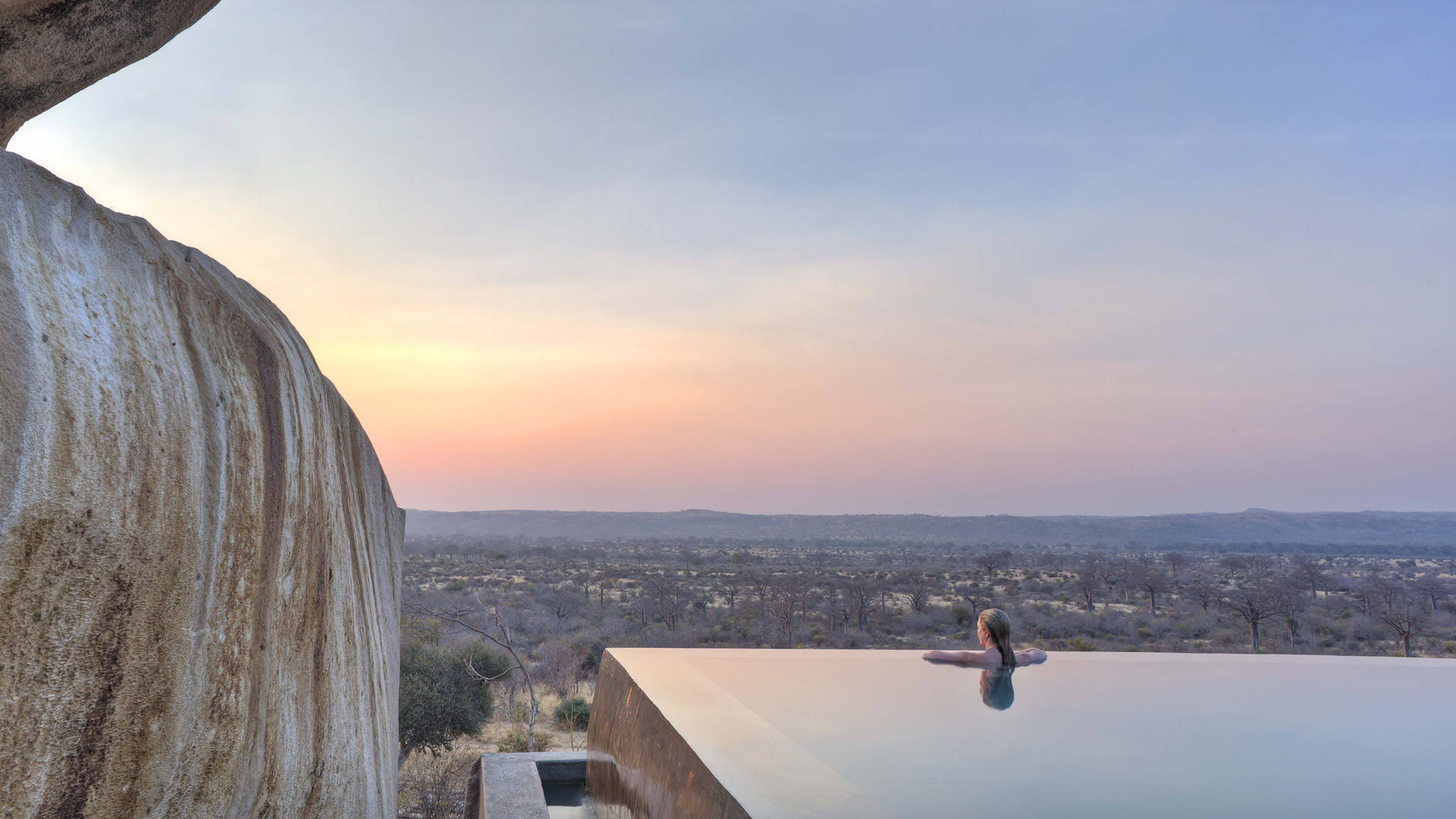Introducing
Ruaha National Park
In 2008 the Usangu Game reserve merged its borders with Ruaha transforming it into Tanzania’s largest national park; it now covers more than 20,000km². Despite the size of the park there are still only a handful of camps found here, which has built Ruaha’s reputation as Tanzania’s best kept game viewing secret. Ruaha’s wild and untrammelled feel is what sets it apart from other reserves, making it a popular choice for regular east African safarigoers.
Despite being the largest National Park in Tanzania and having a substantial elephant population in addition to other big game, there are very few lodges in Ruaha National Park. Known as one of Tanzania’s best kept secrets, Ruaha receives very few visitors each year, meaning it offers some of the most remote and untouched wilderness in Tanzania. Its’ rolling hills, gigantic baobab trees, vast open plains, miombo woodlands, and the Great Ruaha River yield a myriad landscapes from which to view the diversity of game inhabiting this park. One has the feeling of delving deep into the African wilderness surrounded by so many animals and so few, if any, vehicles.
Highlights
Ruaha National Park is Tanzania’s largest national park that covers more than 20,000km².
Ruaha National Park receives very few visitors each year, meaning it offers some of the most remote and untouched wilderness in Tanzania.
Rolling hills, gigantic baobab trees, vast open plains, miombo woodlands, and the Great Ruaha River yield a myriad landscapes.
Its remoteness - and utter vastness - is what makes it so compelling and is home to the largest concentration of elephants in Tanzania, lions, and even crocodiles on the shores of the Great Ruaha River.
Wildlife Viewing:
Ruaha National Park
Ruaha has the largest concentration of elephants in East Africa with a population of around 10,000 of these gentle giants. Ruaha is also home to 10% of global lion populations. You also have a chance of seeing leopards, cheetahs, zebras, elands, giraffes, impalas, bat-eared foxes, snakes, crocodiles, and jackals. Ruaha’s unique position on the verge of Southern Africa means that it is home to species from Southern and Eastern Africa. The greater and lesser kudu can both be found at Ruaha. Whilst the greater kudu is traditionally found in Southern Africa, the lesser kudu is found in East Africa.
Ruaha is home to dozens of rare species, including the sable and roan antelopes. Cheetahs and leopards are difficult to spot in most places, but they are often sighted as they pursue their prey in the open plains of Ruaha. The wild dog is endangered worldwide, but around 100 wild dogs live in the park. Ruaha is a birdwatcher’s paradise and 571 bird species have been sighted at the park. Ruaha also has beautiful landscapes which are dotted with acacias, baobabs, and over 1,650 plant species.

Best time to visit:
Ruaha National Park
Like most other Tanzanian national parks, it is best to visit Ruaha during the long dry season from June to October. It is relatively cool during this period compared to the hot dry season from mid-December to mid-March. The dry season also provides great conditions for wildlife viewing because animals are drawn to the dwindling water sources and the grass is too short for them to hide. For bird enthusiasts, the European winter months (December to April) are the best time to visit as migratory birds make their way down to Tanzania. Some lodges close in the long-wet season (March-May), so you will need to be flexible when you are finding your accommodation.
How to get to:
Ruaha National Park
Ruaha’s remote location means that it is difficult to access, but the long journey is rewarded ten times over by the secluded safari paradise that awaits. The Southern Safari Circuit is less popular, so flight connections are not as frequent. You can reach Ruaha via plane or car, although we recommend the former for ease and comfort. If you do decide to drive, you'll get a wonderful insight into rural Tanzanian life, and you can enjoy the changing landscapes that never fail to impress. If you decide to stop over in Morogoro or Iringa, you can even get a taste of traditional village life. Ruaha is 625 km away from Dar es Salaam and the road journey takes around 9 hours. You can also drive from Iringa which is only 130 km away. By plane, the journey is a lot shorter. There are frequent flights from Dar es Salaam, Arusha, the Serengeti, Kigoma, and Dodoma to the local airstrips, Msembe and Jongomero.









